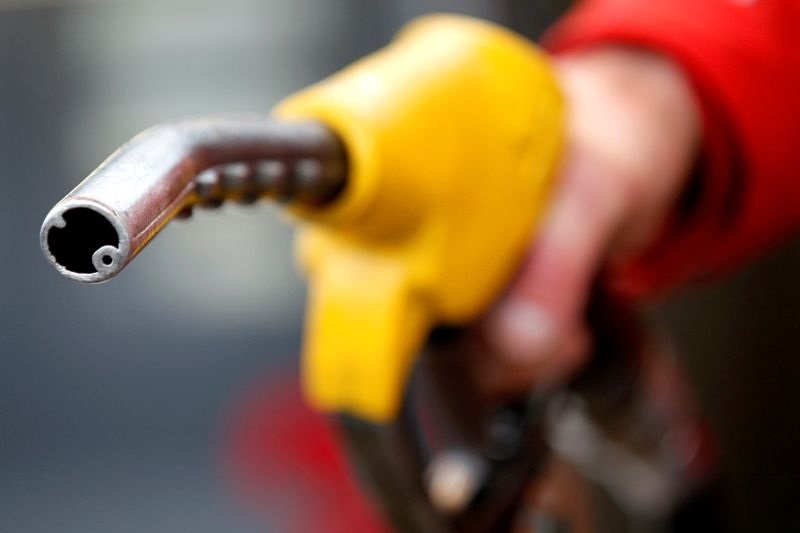Bitcoin price today: hits record high over $124k on rate cut bets, corporate cheer
By Barani Krishnan
Investing.com -- Crude markets rose for a fourth time in five days, hitting a high of almost $125 a barrel for a three-month peak, as oil bulls wagered on the rally continuing after positive data on U.S. gasoline consumption set aside fears of demand destruction from record high fuel prices.
China’s emergence from Covid scares could boost greater demand for oil from the world’s largest importer of the commodity, while an oil workers’ strike in Norway this weekend threatens to further curb global supplies, traders said.
“The market remains extremely tight and that is keeping the upward pressure on crude prices,” Craig Erlam, analyst at online trading platform OANDA, said.
London-traded Brent, the global benchmark for crude, was up $3.01, or 2.5%, at $123.58 a barrel.
Brent earlier hit an intraday high of $124.38, its highest since 14-year peaks of above $130 reached on March 9 after the invasion of Ukraine that triggered Western sanctions on Russian oil that upended the global energy market. The global crude benchmark is up almost 60% so far for this year.
West Texas Intermediate, the New York-traded benchmark for U.S. crude, settled up $2.70, or 2.3%, at $122.11 per barrel, after a session high of $123.15. Year-to-date, the U.S. crude benchmark is up more than 62%.
Wednesday’s rally came after the Energy Information Administration reported that U.S, gasoline inventories fell last week by 812,000 barrels against market expectations for a build of 1.08 million barrels.
The EIA said gasoline production increased last week, averaging 10 million barrels per day. But gasoline supplied to the market — a measure of demand for America’s main automobile fuel — averaged 9 million barrels daily, down by less than 1% from the same period last year.
Oil bulls pounced on that data, ignoring higher stockpiles for crude oil and distillates reported by the EIA.
Crude inventories rose by 2.03 million barrels against a forecast decline of 1.92 million and against the previous week’s drawdown of 5.07 million.
Balances of distillates — or middle-of-the-barrel oil that is refined into diesel for trucks, buses, trains and ships; fuel for airplanes and heating oil for homes — rose by 2.59 million barrels versus a projected build of 1.06 million and the previous week’s draw of 530,000 barrels.
Exports of U.S. crude also showed a staggering drop, falling to 2.23 million barrels daily from the previous week’s level that was just shy of 4 million barrels a day.
“It’s a question of cherry-picking the data you want and the long-end of the market has got its nose completely buried in gasoline now, which are showing weekly net draws despite record pump prices,” said John Kilduff, partner at New York energy hedge fund Again Capital.
Gasoline averaged a record high of $4.955 a gallon at U.S. pumps on Wednesday, up from $3.060 a year ago. Diesel averaged an all-time high of $5.719 versus the year-ago level of $3.201 per gallon.
Average prices aside, many U.S. pumps are already selling gasoline at well above $5, with one in Mendocino, about 150 miles north of San Francisco, reportedly asking just 40 cents shy of $10 a gallon. Diesel in many parts of the U.S. West Coast, particularly California, already retails at above $6.
Also boosting sentiment in oil was EIA data showing the US Strategic Petroleum Reserve falling by a record of more than 7 million barrels last week, some two million more a week than in mid-May, as the Biden administration increasingly relies on the emergency oil reserve to reduce a supply deficit and tamp down all-time highs in fuel prices.
The SPR’s balance stood at 519.3 million barrels for the week ended June 3, down 7.3 million barrels from the prior week to May 27, the Energy Information Administration (EIA) said in its Weekly Petroleum Status Report released Wednesday.
The drawdown compares with the 5 million barrels taken out of the oil reserve during the week to May 13.
The SPR balance itself remained at 35-year lows, hitting a trough last seen in March 1987.
“Weekly SPR draws are likely to remain around these levels or maybe go even a little higher based on the outflows scheduled between the end of May and October,” said Again Capital’s Kilduff.
The Biden administration is in the process of withdrawing some 180 million barrels from the SPR between May and October in a bid to ease the supply gap in crude and dampen some of the surge in pump prices of fuel.
